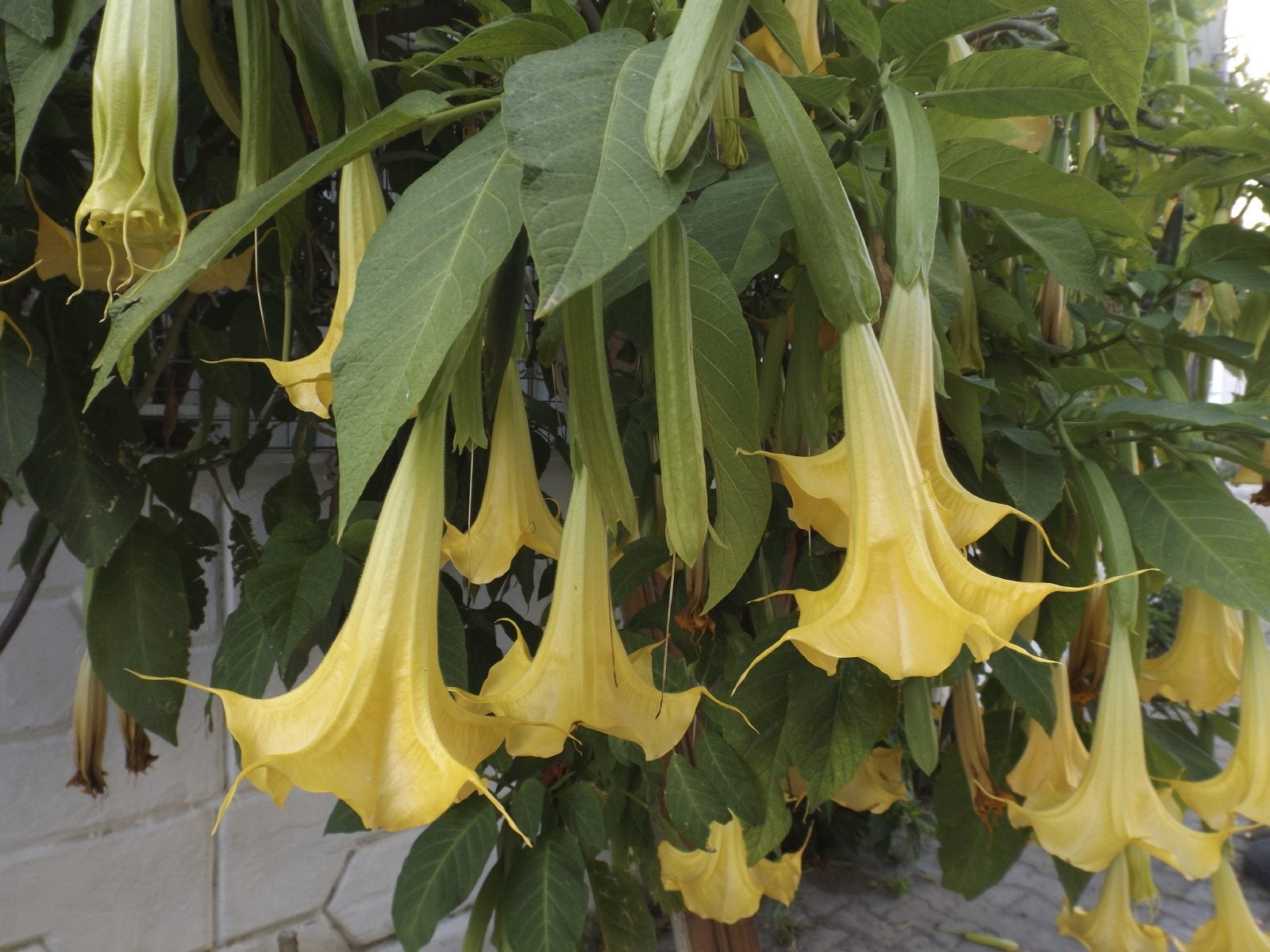Brugmansia Problems: How To Treat Disease And Pests Of Brugmansia


Also known as angel trumpet or simply “brug,” brugmansia is a shrubby plant with masses of impressive, trumpet-shaped flowers measuring up to 20 inches (50 cm.) in length. The stunning blooms appear from spring until early winter. Although little care is required to grow this beauty, brugmansia pests and diseases may compromise the health and longevity of the plant.
Brugmansia Diseases
The most common Brugmansia diseases include:
Fungal wilts
Fungal issues affecting brugmansia include fusarium and verticillium wilt. Both diseases, which enter the plant through the roots and travel up the stem, block transmission of water and cause stunted growth and wilted foliage. Fusarium wilt is usually seen in warm weather, while verticillium is more common when the weather is cool. There are no practical chemical controls for fusarium and verticillium wilt, and the fungi can live in the soil for long periods. The best recourse is to begin with healthy, disease-resistant plants and grow them in contaminant-free potting medium.
Mosaic virus
Tobacco mosaic virus is identified by mosaic-like, yellow or light green areas. Although the virus rarely kills the plant, it can affect its appearance. Once infected, the disease remains for the life of the plant.
Root rot
Rot is a common, usually deadly, fungal disease caused by excessive watering. To prevent root rot, keep the potting mix moist, but never soggy, during the summer months. Decrease watering when temperatures drop in late summer or autumn.
Pests of Brugmansia
Brugmansia problems include pests such as:
Take steps to control the pests without chemicals; avoidance of insecticides is an important aspect of pest management. Chemicals are counterproductive because they kill insects such as lady beetles and lacewings that help keep pests in check. Insecticidal soap is useful in the control of sap-sucking insects and poses minimal danger to beneficial insects. Use the product only as directed, and never spray when beneficial insects are present on the leaves. Neem oil is another option. Tomato hornworms are a different type of pest that can defoliate a plant quickly. The best control is to hand-pick the large, caterpillar-like pests, which are most often seen in mornings and early evenings. If squishing the pests makes you squeamish, drop them into a container of soapy water. Leave hornworms alone if you notice small larvae feeding on the pests. The larvae are trichogramma, parasitic wasps that are extremely effective when it comes to eating the eggs of numerous garden pests. These tiny wasps are highly beneficial in the garden, and they don't sting.
Sign up for the Gardening Know How newsletter today and receive a free copy of our e-book "How to Grow Delicious Tomatoes".

A Credentialed Garden Writer, Mary H. Dyer was with Gardening Know How in the very beginning, publishing articles as early as 2007.